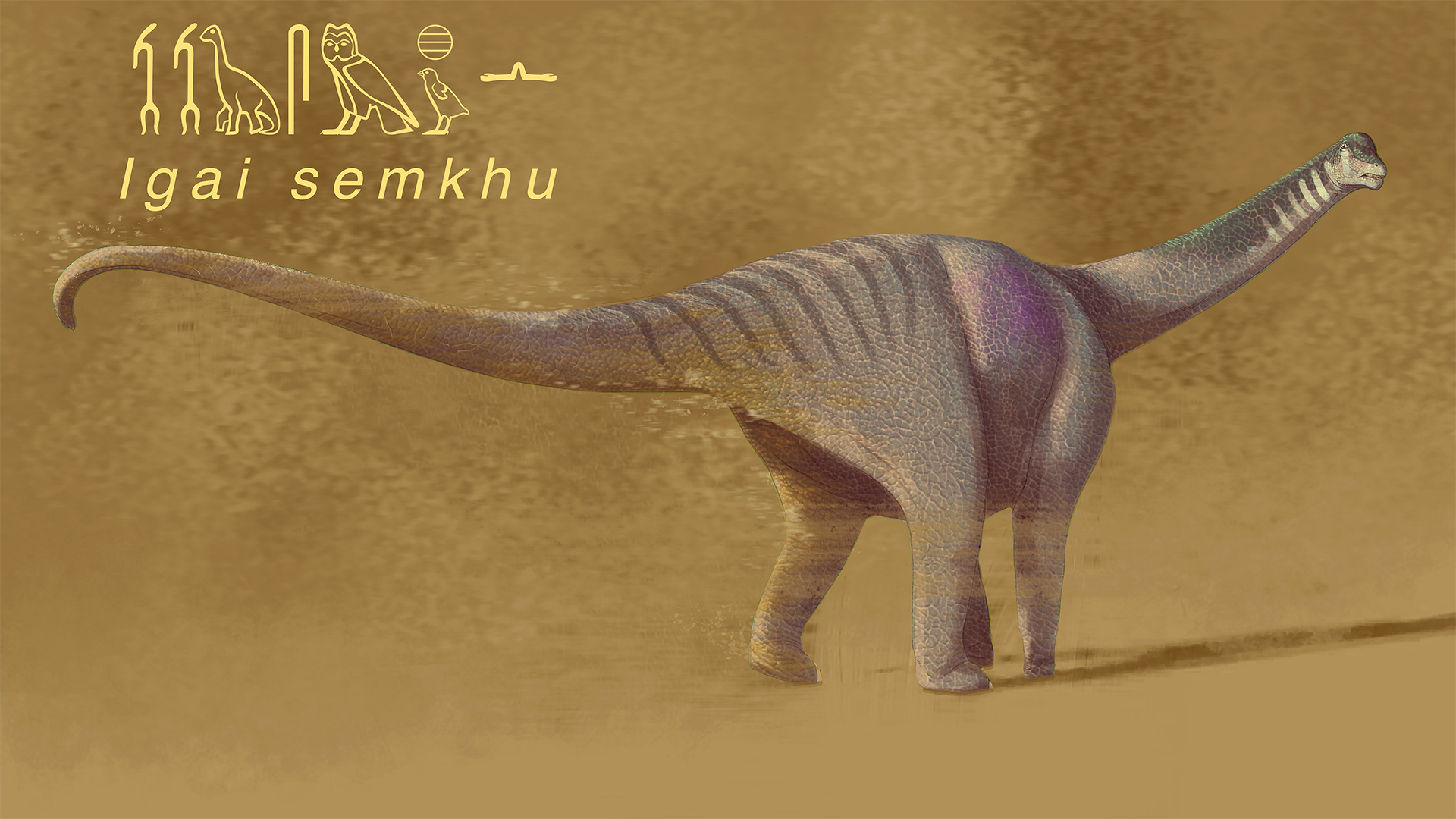75 million-year-old 'forgotten lord of the oasis' titanosaur fossils from Egypt fill a 'black hole' in dinosaur history
A newly described titanosaur species, named after an ancient Egyptian deity, fills a gap in our understanding of Africa's dinosaurs.

A strange species of tiny titanosaur has finally been given a name, nearly 50 years after its bones were unearthed from the Egyptian desert.
The newly described species, called Igai semkhu, lived 75 million years ago in what is now the Kharga Oasis.
The name Igai semkhu translates to "Forgotten Lord of the Oasis" in ancient Egyptian and can be represented in hieroglyphics. "It's named after a deity the Ancient Egyptians would have worshiped in the oasis it came from," study author Matthew Lamanna, a paleontologist at the Carnegie Museum of Natural History, told Live Science.
The relatively diminutive titanosaur, which was a "mere" 33 to 50 feet (10 to 15 meters) long, was described July 2023 in the Journal of Vertebrate Paleontology.
"It's definitely something to get excited about," Lamanna said. "It is helping fill in this black hole in our understanding of the final 30 million years of the Age of Dinosaurs on one of the largest landmasses on Earth."
Related: Long-necked dinosaurs probably had even longer necks than we thought
German researchers first chipped Igai semkhu from rocks in the Western Desert in Egypt in 1977, but the specimen was forgotten for decades until Lamanna and his colleagues took a second look.
Sign up for the Live Science daily newsletter now
Get the world’s most fascinating discoveries delivered straight to your inbox.
It turned out I. semkhu was a previously unknown genus and species of titanosaur, which is a subgroup of sauropods. Sauropods were plant-eating dinosaurs with small heads, long necks and big, elephant-like bodies.
But 75 million years ago, when Igai semkhu was likely to be alive, most sauropods were already extinct, leaving titanosaurs as the only existing sauropod lineage in the Cretaceous era (145 million to 66 million years ago).
Despite their name, titanosaurs weren't all titanic. "Titanosaurs range from some of the smallest sauropods ever found, about the size and weight of a cow, all the way up to the size of a humpback whale," said Lamanna. They were " the largest land animals to have ever existed."
Igai semkhu sits somewhere in between these extremes. Eric Gorscak, study co-author and paleontologist at Midwestern University, estimated I. semkhu's size from a pair of leg bones — the tibia and fibula. The upper estimate, about the length of a school bus, would place it "slightly below average" in size, Lamanna said.
Because all that remains of I. semkhu is a few leg bones and some vertebrae, it is impossible to know exactly what it looked like, Lamanna said.
But despite the scant fossils available, I. semkhu is one of the most complete dinosaur fossils ever unearthed in Africa, where known dinosaur fossils are relatively rare.
"When you are talking about continental Africa,the last 30 million years of the dinosaur record are almost non-existent," Lamanna said.
Partly, that's because paleontologists haven't been digging in Africa for as long as they have in other places. In addition, while the continent harbors many Cretaceous-era rocks, very few are easily accessible. Many potential fossil sites are either covered by thick vegetation or deep desert sands.
This rarity makes the newly described titanosaur important.
"Igai is, although still fragmentary, complete relative to the rest of the record, and is therefore a pretty significant addition to our understanding," John Whitlock, professor of Anatomy at Mount Aloysius College in Pennsylvania, who was not involved with the study, told Live Science.

Cameron Duke is a contributing writer for Live Science who mainly covers life sciences. He also writes for New Scientist as well as MinuteEarth and Discovery's Curiosity Daily Podcast. He holds a master's degree in animal behavior from Western Carolina University and is an adjunct instructor at the University of Northern Colorado, teaching biology.









